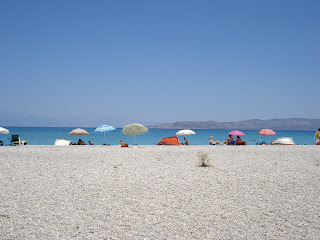 Creativity in the English language classroom
Creativity in the English language classroom
Edited by Alan
Maley and Nik Peachey
British Council
2015 172pp.
Paperback ISBN 978-0-86355-767-5
This book is a
collection of eighteen chapters, some by established experts, some by writers
not yet widely known, constituting what Chris Kennedy in his foreword (3)
describes as “a kaleidoscope of practical case studies to illustrate what
practitioners regard as creative”. Each chapter
consists of a brief introduction followed by examples of activities. In his
overview, Alan Maley notes (7) that “creativity encourages and facilitates
divergent thinking, and frees us of the idea that questions always have a
single, right answer”, and as Brian Tomlinson points out in his chapter,
“fostering creativity […] can help to achieve the affective and cognitive
engagement vital for language acquisition”.
The activities
described provide a wide range of ideas illustrating exactly how these
principles can be put into practice. They show that creativity can take as its
starting point activities in the course book, stories from the teacher, or
experiences that students draw on. While a variety of media are used in the
activities, there is a recognition that teachers working in financially
deprived areas may need to use whatever resources are available to them
locally.
Activities are
provided for leaners of all ages and levels, and for any size of class. Some
chapters focus specifically on the primary ELT classroom, while others describe
activities designed for secondary and adult learners. While some chapters focus
on oral creativity, there are also many ideas for creative activities integrating
reading and writing. There are activities for teaching pronunciation and
vocabulary, and a chapter devoted to teaching grammar creatively. Story-telling,
creative writing, literature and drama are incorporated in several of the
chapters.
The detailed
descriptions of procedure make it easy for any teacher to implement these
specific activities, and more importantly illustrate the approaches and techniques
that we can adopt in order to develop our own creativity and design our own
activities. This is an excellent collection that will be valuable to teachers
at any stage of their careers, and could also be a useful resource for initial
training courses and continuing professional development.
Peter Beech, Anglo-Hellenic Teacher Training, Corinth, Greece
mail@peterbeech.com
Review first published in IATEFL Voices 249, March - April 2016
 Interviews in London this summer will be held as usual at the St Giles Hotel.
Interviews in London this summer will be held as usual at the St Giles Hotel. Anyone
intending to apply for jobs starting in September, please ensure we
receive your application as soon as possible. Applications should be
emailed to jobs@anglo-hellenic.com
Anyone
intending to apply for jobs starting in September, please ensure we
receive your application as soon as possible. Applications should be
emailed to jobs@anglo-hellenic.com




